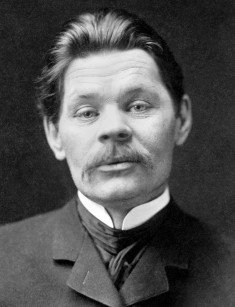
Maxim Gorky: biography
Alexei Peshkov, more known as the writer Maxim Gorky, is the iconic figure in the Russian and Soviet literature. He was nominated for the Nobel prize five times. Gorky was the writer whose works were published most frequently throughout the whole Soviet period; together with Alexander Sergeyevich Pushkin and Leo Tolstoy, he was considered the central creator of the national literary art.

He was born in Kanavino, the town in the province of Nizhny Novgorod, which is now one of the districts in Nizhny Novgorod. His father Maxim Peshkov was a carpenter and, in his last years, a steamship company administrator. His mother Varvara Vasiljevna died of consumption; it was Akulina Ivanovna who took the place of Alesha Peshkov’s parents. Since 11, the boy had to work: Maxim Gorky was a shop messenger, a pantry-boy, a baker’s assistant, and an icon painter’s assistant. Maxim Gorky described his biography in his books “My Childhood,” “In the World,” and “My Universities.”
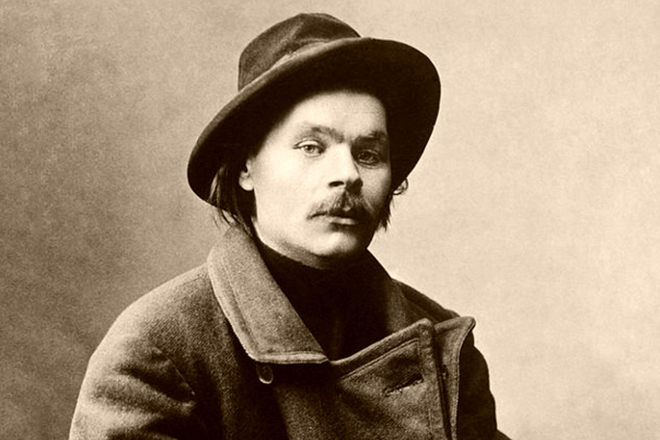
After a failure to become a student of Kazan University and arrest related to his connections with the Marxist group, the future writer became a watchman at the railway station. At the age of 23, the young man started traveling over the country and managed to walk to the Caucasus. During this travel, Maxim Gorky was writing down some ideas that later constituted the basis of his works. The first short stories by Maxim Gorky appeared approximately at this time.
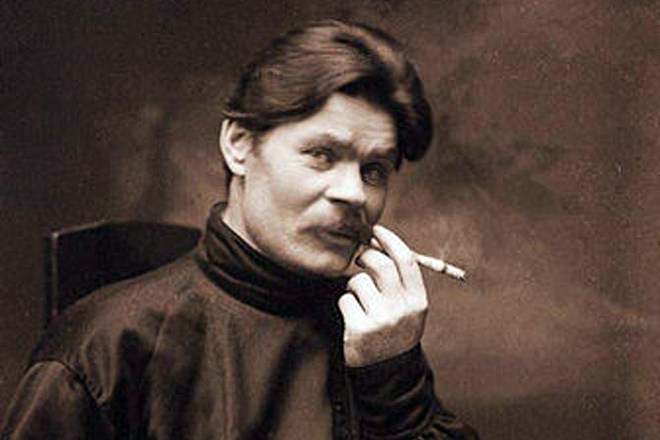
Having become a famous writer, Alexei Peshkov went to the United States, later moves to Italy. It happened not because of the conflict with the authorities, as some sources present it – it was due to the changes in his family life. However, Gorky continued to write revolutionary books abroad. He came back to Russia in 1913, settled in Saint Petersburg, and began to work for different publishing houses.
It is interesting that with his Marxist views, Peshkov looked at the October Revolution skeptically. After the Russian Civil War, due to some disagreement with the new authorities, Maxim Gorky went abroad again to return home for good in 1932.
The Writer
The first Maxim Gorky’s story published in 1892 was the famous “Makar Chudra.” Two volumes of “Essays and Stories” made the writer well-known. It is notable that the edition of these volumes was three times larger than usual in comparison with what was normal at that time. The short stories “The Old Woman Izergil,” “Creatures That One Were Men,” “Chelkash,” “Twenty-Six Men and a Girl,” and the poem “Song of a Falcon” are the most popular works of that period. Another poem, “The Song of a Stormy Petrel,” became iconic. Maxim Gorky allocated much time for children’s literature. He created many fairy tales, for example, “A Little Sparrow,” “Samovar,” “Tales of Italy,” published the first Soviet children’s magazine, and organized parties for children from poor families.

To comprehend the writer’s creative work, it is important to view Maxim Gorky’s plays “The Lower Depths,” “The Philistines,” and “Yegor Bulychyov and Others.” In these works, the author’s talent of a playwright manifests itself, and he demonstrates how he perceives the life around him. The short novels “My Childhood,” “In the World,” the social novels “The Mother” and “The Artamonov Business” are of great cultural significance for the Russian literature. The last work of Gorky is the epic novel “Life of Klim Samgin,” also known as “Forty Years.” The writer had been working on this manuscript for 11 years but did not manage to finish it.
Personal Life
Maxim Gorky’s personal life was quite stormy. For the first time, he married at 28, and this was also his last official marriage. Gorky met his would-be wife Ekaterina Volozhina at the “Samarskaya Gazeta” publishing house where the young woman worked as a proofreader. In a year after the marriage, the son Maxim was born; soon, the daughter Ekaterina named after her mother was born. Besides, the writer brought up his godson Zinovy Sverdlov who later took the last name Peshkov.
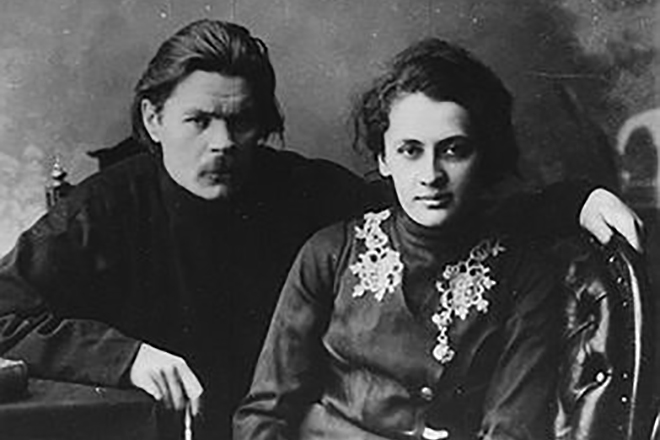
However, the infatuation was over soon. Gorky was burdened by the family life, and his marriage turned into a parental union: they lived together for the sake of their children only. The tragic and sudden death of the little daughter Katya triggered the family breakup. Still, Maxim Gorky and his wife remained good friends for a lifetime and maintained correspondence.
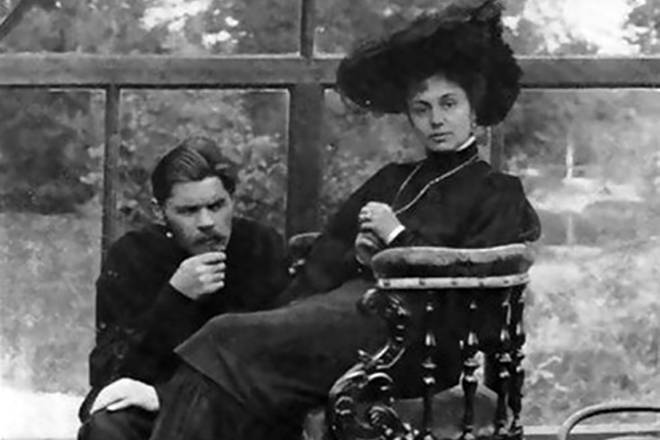
After the breakup with Volozhina, with Anton Pavlovich Chekhov’s assistance, Maxim Gorky met the actress of the Moscow Art Theater Maria Andreeva. For the next 16 years, she was his wife unofficially. Because of her work, the writer went to America and Italy. It was Gorky who brought up Ekaterina and Andrey, the actress’s children from the previous relationship. However, after the Revolution took place, Andreeva became engaged in the work of the party and, consequently, paid less attention to her family. As a result, in 1919, this couple also split up.

Gorky himself finished the relationship and stated he was leaving Andreeva for another woman, Maria Budberg, the former Baroness and simultaneously his secretary. With this woman, Gorky lived for 13 years in an unregistered marriage as well. The last wife of Gorky was 24 years younger than he, and everybody was aware that she having love affairs with other men. The English fantast Herbert Wells was one of Brudberg’s lovers – as soon as her actual husband died, she went to him. It is highly possible that Maria Brudberg, who had acquired a reputation of an adventuress and undoubtedly collaborated with NKVD, was a double agent who worked for the English intelligence.
Death
After the writer had finally come back to his motherland in 1932, Maxim Gorky worked in newspaper and magazine publishing houses and created the book series “The History of Plants and Factories,” “The Poet’s Library,” “The History of the Russian Civil War.” He also organized and held the First All-Union Congress of Soviet Writers.
With the sudden death of his son who died of lung inflammation, the writer was dispirited. Visiting Maxim’s grave, he caught a bad cold. For three weeks, he had the fever that led to the death on June 18, 1936. The body of the Soviet writer was cremated, and his remains were placed in the Kremlin wall at the Red Square. Before that, Maxim Gorky’s brain was delivered to the Research Institute for further studies.

Later, the issue about possible poisoning of the legendary writer and his son was raised several times. The people’s commissar Genrikh Yagoda, who was the lover of Maxim Peshkov’s wife, was a person of interest in the case investigation. In addition, Leon Trotsky and even Joseph Stalin were suspected of the participation. During the repressions and the Doctor’s plot, three physicians were accused of Maxim Gorky’s death among other things.
Maxim Gorky’s books
- 1899 — Foma Gordeev
- 1902 — The Lower Depths
- 1906 — The Mother
- 1908 — Life of a Useless Man
- 1914 — My Childhood
- 1916 — In the World
- 1923 — My Universities
- 1925 — The Artamonov Business
- 1931 — Yegor Bulychyov and Others
- 1936 — Life of Klim Samgin





